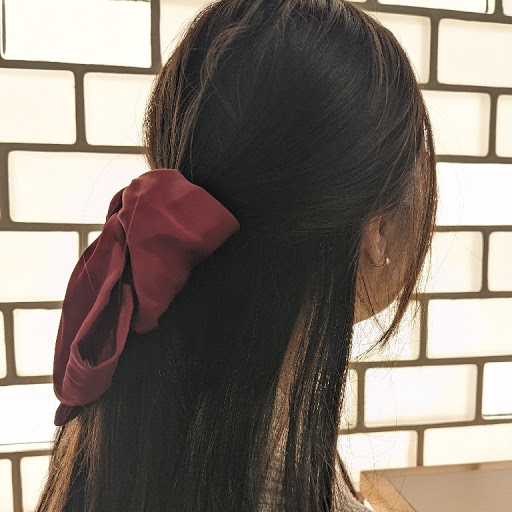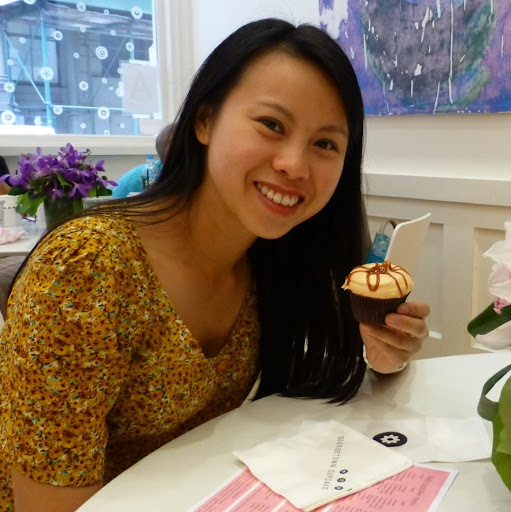Jenny K Lai
from Tacoma, WA
- Also known as:
-
- Jenny Kc Lai
Jenny Lai Phones & Addresses
- Tacoma, WA
- Issaquah, WA
Name / Title
Company / Classification
Phones & Addresses
Medical Assistant
Nguyen David
Medical Doctor's Office
Medical Doctor's Office
2120 Rainier Ave S, Seattle, WA 98144
206 860-0288
206 860-0288
Medical Assistant
Nguyens Pharmacy & Gifts Inc
Ret Drugs/Sundries · Pharmacy & Ret Gifts · Pharmacies and Drug Stores · Pharmacies & Drug Stores
Ret Drugs/Sundries · Pharmacy & Ret Gifts · Pharmacies and Drug Stores · Pharmacies & Drug Stores
1221 S Main St, Seattle, WA 98144
2120 Rainier Ave S, Seattle, WA 98144
206 323-6003, 206 323-9525, 206 323-9526
2120 Rainier Ave S, Seattle, WA 98144
206 323-6003, 206 323-9525, 206 323-9526
Art Fund I Limited Partnership
Business Services
Business Services
1906 8 Ave W, Seattle, WA 98119
Us Patents
-
Disambiguation Of Telephone Style Key Presses To Yield Chinese Text Using Segmentation And Selective Shifting
view source -
US Patent:8103499, Jan 24, 2012
-
Filed:Mar 18, 2008
-
Appl. No.:12/050840
-
Inventors:Jenny Huang-Yu Lai - Seattle WA, US
Jianchao Wu - Sammamish WA, US -
Assignee:Tegic Communications, Inc. - Seattle WA
-
International Classification:G06F 17/28
-
US Classification:704 4, 704 2, 704 3, 704 7, 704 8, 704 9, 345168, 345171, 715262, 715263, 715264, 715265
-
Abstract:To enter Chinese text, a user enters the corresponding phonetic spelling via telephone style keypad. Some or all keys represent multiple phonetic letters. In disambiguating entered key presses to yield a valid phonetic spelling, a computer divides the key presses into segments, while still preserving key press order. Each segment must correspond to an entry in a dictionary of Chinese characters, character phrases, and/or character components such as radicals or other predetermined stroke groupings. Upon arrival of a new key press that cannot form a valid entry when appended to the current segment, key presses are incrementally reallocated from the previous segment. As for already-resolved segments occurring prior to the previous and current segments, these are left intact. After each shifting attempt, the computer reinterprets key presses of the last two segments, and accepts the new segmentation if the segments form valid dictionary entries.
-
System And Method For Disambiguating Phonetic Input
view source -
US Patent:20050027524, Feb 3, 2005
-
Filed:Jul 30, 2003
-
Appl. No.:10/631543
-
Inventors:Jianchao Wu - Sammamish WA, US
Jenny Lai - Seattle WA, US
Lian He - Kirkland WA, US
Pim Meurs - Kenmore WA, US
Keng Wong - Seattle WA, US
Lu Zhang - Bothell WA, US -
International Classification:G10L015/26
-
US Classification:704235000
-
Abstract:A system and method for inputting Chinese characters using Pinyin without requiring the entry of a delimiter key between Pinyin entries in a reduced keyboard is disclosed. The system searches for all possible single or multiple Pinyin spellings based on the entered Latin alphabets. Once the user has completed the inputting of the Pinyin spellings for desired Chinese phrase or characters, all possible matching phrases or characters are displayed on screen and off-screen due to screen size. The user then scrolls through a list of matching phrases or characters and selects the desired one by clicking.
-
User Interface And Database Structure For Chinese Phrasal Stroke And Phonetic Text Input
view source -
US Patent:20060018545, Jan 26, 2006
-
Filed:Jan 21, 2005
-
Appl. No.:11/040911
-
Inventors:Lu Zhang - Bothell WA, US
Pim Meurs - Kenmore WA, US
Lian He - Issaquah WA, US
Ethan Bradford - Seattle WA, US
Jianchao Wu - Sammamish WA, US
Jenny Lai - Seattle WA, US
Kengchong Wong - Bellevue WA, US
Siu Leung - Redmond WA, US -
International Classification:G06K 9/18
-
US Classification:382185000
-
Abstract:The invention provides a stroke and phonetic text input entry system that has substantially the same definition of stroke match as that used in T9, where the input is a phrasal input rather than a character input. The invention solves the problem of Chinese phrasal stroke and phonetic text input by allowing users to enter an arbitrary number of strokes for each character in a phrase, where each character is separated by a delimiter. In this way, the invention provides a system that is easily learned and efficiently applied. Thus, the invention makes it possible for users to enter multiple characters while keeping their single character input habits. Each Chinese character has a standard stroke sequence in Guo Biao (GB), which is the standard for mainland China, or multiple sequences for BIG5 Chinese Character Encoding for Traditional (Complex) Characters, which is the de facto standard in Taiwan but not used in mainland China. With the invention, users do not have to enter the complete sequence for a single character, but instead can stop at any point and enter a delimiter which indicates the end of the previous character and the start of the next character. The whole stroke sequence entered by the user can then be split into a few groups that are separated by zero or more delimiters. Phrases can then be identified by user entry of groups of characters. The presently preferred phrase matching criteria are as follows: the first stroke group matches the leading stroke sequence of the first character of the phrase; the second stroke group matches the leading stroke sequence of the second character of the phrase, etc; the phrases that match the entered stroke sequence are presented to the user for selection. A user interface design for Chinese phrasal stroke text input is also provided.
-
Separation Of Components And Characters In Chinese Text Input
view source -
US Patent:20070040707, Feb 22, 2007
-
Filed:Aug 15, 2006
-
Appl. No.:11/464748
-
Inventors:Jenny Lai - Seattle WA, US
-
International Classification:H03K 17/94
G06F 17/20 -
US Classification:341028000, 704008000
-
Abstract:Components and characters are separated in a user interface for stroke based input of Chinese characters. A user enters a stroke sequence, and matching components and characters are separately displayed in separate selection lists. When the user selects a component, the character selection list is updated to only display characters that contain that component. This input methodology can be implemented on mobile phones, as well as other computing devices such as personal digital assistants. More characters are visible in the character selection list, which aids all users. Of further benefit to those who do use components, more components are displayed as components and characters do not need to share selection list space. Furthermore, separating components and characters reduces confusion between characters and components that look similar.
-
Processing Of Reduced-Set User Input Text With Selected One Of Multiple Vocabularies And Resolution Modalities
view source -
US Patent:20080154576, Jun 26, 2008
-
Filed:Dec 21, 2006
-
Appl. No.:11/614960
-
Inventors:Jianchao Wu - Sammamish WA, US
Jenny Huang-Yu Lai - Seattle WA, US -
International Classification:G06F 17/28
-
US Classification:704 2
-
Abstract:A computer-driven system includes different modes interpreting user entered text according to different corresponding vocabularies. Each mode may additionally include a different modality for ultimately resolving and completing the input. Each mode presents the user with a different interpretation of user entered text, according to the associated vocabulary. Displayed output is limited to one or another of the modes in accordance with user instructions to switch between modes.
-
Non-Modal Search Box With Text-Entry Ribbon For A Portable Media Player
view source -
US Patent:20080168381, Jul 10, 2008
-
Filed:Aug 30, 2007
-
Appl. No.:11/848197
-
Inventors:Jonathan Nelson - Seattle WA, US
David Schultz - Seattle WA, US
Jenny Lai - Seattle WA, US -
International Classification:G06F 3/048
G06F 17/30 -
US Classification:715780
-
Abstract:A non-modal search box with a text-entry ribbon for a portable media player. The non-modal search box enables a user to quickly and efficiently locate media on the portable media player, without having to enter a specific search mode. The non-modal search box may be present on one or more media player screens, without the user first having to select a search option or otherwise indicate a desire to search for a piece of media. The non-modal search box allows a user to navigate between the search box and search results without having to switch modes. The search box is an input box for character entry. The search box may utilize a text-entry ribbon to allow a user to input characters into the search box.
-
Method And System For Search String Entry And Refinement On A Mobile Device
view source -
US Patent:20100318551, Dec 16, 2010
-
Filed:Jun 15, 2010
-
Appl. No.:12/816373
-
Inventors:Jenny Lai - Seattle WA, US
-
International Classification:G06F 17/30
G06F 3/048 -
US Classification:707765, 715810, 707E17063
-
Abstract:A hardware and/or software facility facilitates search string entry and refinement on a mobile device. A user enters a search string on a mobile device via one or more input methods. The facility searches the user's device and/or one or more remote data areas and returns search results that match the entered search string. Search results include, for example, information, links, files, and other results that correspond to the search string. Before and/or after the search is performed, the facility applies one or more filters that produce refined search results. Filters may relate to location, category, synonyms, data type, social-network, and other groupings—including user-defined groupings—that may refine the search results. Filters may be applied automatically and/or in response to user selection of a filter.
License Records
Jenny Kuan-Chen Lai
Address:
24827 SE 37 Pl, Issaquah, WA 98029
License #:
755359 - Expired
Issued Date:
May 28, 2013
Renew Date:
May 28, 2013
Expiration Date:
Jan 31, 2014
Type:
Certified Nurse Aide
Resumes

Financial Management Associate
view sourceLocation:
Berkeley, CA
Industry:
Internet
Work:
Eden Inc.
Account Manager
Evertoon May 2016 - Mar 2017
Marketing and Community Management Intern
Sdc Blue Ribbon Foundation May 2015 - Jun 2016
Fundraising Chair
Supercap Jun 2014 - Aug 2014
Marketing Intern
Lyft 2014 - 2014
Brand Ambassador
Account Manager
Evertoon May 2016 - Mar 2017
Marketing and Community Management Intern
Sdc Blue Ribbon Foundation May 2015 - Jun 2016
Fundraising Chair
Supercap Jun 2014 - Aug 2014
Marketing Intern
Lyft 2014 - 2014
Brand Ambassador
Education:
University of California, Berkeley 2013 - 2017
Bachelors, Economics
Bachelors, Economics
Skills:
Leadership
Marketing
Public Speaking
Fundraising
Microsoft Office
Social Media
Teamwork
Data Analysis
Sales
Microsoft Excel
Microsoft Powerpoint
Research
Marketing
Public Speaking
Fundraising
Microsoft Office
Social Media
Teamwork
Data Analysis
Sales
Microsoft Excel
Microsoft Powerpoint
Research
Languages:
English
Mandarin
Mandarin

Jenny Lai
view source
Jenny Lai
view source
Jenny Lai
view source
Jenny Lai
view sourceLocation:
United States
Medicine Doctors

Jenny M. Lai
view sourceSpecialties:
Physical Medicine & Rehabilitation
Work:
Methodist Rehabilitation Associates
6560 Fannin St STE 1878, Houston, TX 77030
713 441-5189 (phone), 713 790-6604 (fax)
6560 Fannin St STE 1878, Houston, TX 77030
713 441-5189 (phone), 713 790-6604 (fax)
Education:
Medical School
University of Texas Southwestern Medical Center at Dallas
Graduated: 1992
University of Texas Southwestern Medical Center at Dallas
Graduated: 1992
Procedures:
Occupational Therapy Evaluation
Physical Therapy
Physical Therapy Evaluation
Neurological Testing
Physical Therapy
Physical Therapy Evaluation
Neurological Testing
Languages:
Chinese
English
Spanish
Vietnamese
English
Spanish
Vietnamese
Description:
Dr. Lai graduated from the University of Texas Southwestern Medical Center at Dallas in 1992. She works in Houston, TX and specializes in Physical Medicine & Rehabilitation. Dr. Lai is affiliated with Houston Methodist Hospital.
Youtube
News

HTC's New Phone to Have Fingerprint Sensor
view source- The applications for fingerprint sensors are still pretty narrow, HSBC technology analyst Jenny Lai said. To do something like wireless payments, it requires a whole system to be built up, not just the hardware. There are basically two companies that could possibly do this kind of integration: Ap
- Date: Oct 08, 2013
- Category: Sci/Tech
- Source: Google

Hon Hai's Apple Ties Drive Results
view source- s the first quarter for the mass ramp-up of the iPhone 5, and the iPhone business typically carries higher margin than Hon Hais corporate average. We note that the iPhone contributed to about 25%-30% of Hon Hais 4Q top-line, which is a historical peak as well, said HSBC analyst Jenny Lai.
- Date: Mar 26, 2013
- Category: Business
- Source: Google

New York Fashion Week Debut Still The Goal For Designers, Despite The Cost
view source- sourced capital from Kickstarter, using hype to acquire big-name sponsors, and using an incubator programs' resources, there is another way rookie designers afford debuts. Jenny Lai graduated from the Rhode Island School of Design in 2010 with a degree in apparel design and launched her own clothing line.
- Date: Feb 08, 2013
- Category: Entertainment
- Source: Google

Jenny Lai
view source
Jenny Lai Wa Lai
view source
Jenny Lai
view source
Jenny Lai
view source
Jenny Lai
view source
Jenny Lai
view source
Jenny Kor Lai
view source
Jenny Lai Castillo
view sourceClassmates

Jenny Lai
view sourceSchools:
Washington Middle School Honolulu HI 1986-1988

Jenny Lai
view sourceSchools:
Simon Fraser Elementary School Vancouver Saudi Arabia 1985-1988, Lord Beaconsfield School Vancouver Saudi Arabia 1988-1993
Community:
Judy Stables

Jenny Lai
view sourceSchools:
Salk School of Science 255 New York NY 1997-1999
Community:
Mike Johnston, Russell Harrison

Jenny Lai
view sourceSchools:
Steinway Intermediate School 141 Long Island City NY 1983-1986
Community:
Richard Martin

Salk School of Science 25...
view sourceGraduates:
Jenny Lai (1997-1999),
Alexis Harbour (1996-1998),
Pankaj Srivastava (1999-2003),
Rafif Almulgawi (1998-2002),
Jing Lin (1994-1998),
Jennifer Sherard (1996-1999)
Alexis Harbour (1996-1998),
Pankaj Srivastava (1999-2003),
Rafif Almulgawi (1998-2002),
Jing Lin (1994-1998),
Jennifer Sherard (1996-1999)

Lord Beaconsfield School,...
view sourceGraduates:
Jenny Lai (1988-1993),
Donald Davison (1991-1993),
Connie Wu (1986-1994),
Wanda Mazur (1963-1971),
Cheryl Gallo (1961-1968)
Donald Davison (1991-1993),
Connie Wu (1986-1994),
Wanda Mazur (1963-1971),
Cheryl Gallo (1961-1968)

Steinway Intermediate Sch...
view sourceGraduates:
Joseph Park (1999-2003),
Leonard Morency (1992-1996),
Jenny Lai (1983-1986),
Lissette Trillos (1990-1993),
Satinderpal Singh (2004-2008)
Leonard Morency (1992-1996),
Jenny Lai (1983-1986),
Lissette Trillos (1990-1993),
Satinderpal Singh (2004-2008)

Simon Fraser Elementary S...
view sourceGraduates:
Stella Hanuse (1966-1974),
George Bowron (1953-1961),
Jenny Lai (1985-1988),
Jonn Garen (1985-1986)
George Bowron (1953-1961),
Jenny Lai (1985-1988),
Jonn Garen (1985-1986)
Myspace
Flickr
Plaxo

Jenny Lai 賴賽真
view source
Jenny Lai
view sourceHsinchu
Googleplus

Jenny Lai
Relationship:
Single
About:
•º•º•º•º•º•º... Full name; Jennifer Lai Nicknames- Jen, Jenny and Pig Age~ no stalkiee XD Background; Half chinese and Vietnamese >///////< •º•º•º•º•º•º...
Tagline:
I have a thing for pigs, don't judge and lovee ^_________^
Bragging Rights:
I am a pig and yesh i am a pig XD

Jenny Lai
Education:
The University of Hong Kong

Jenny Lai
About:
從養寵物到當了媽,母...
Bragging Rights:
簡單典雅的飾品永不退流行,不需要奢華的裝飾,就能勾勒出妳脫俗的絕佳品味!

Jenny Lai

Jenny Lai

Jenny Lai

Jenny Lai

Jenny Lai
Relationship:
In_a_relationship
Get Report for Jenny K Lai from Tacoma, WA














